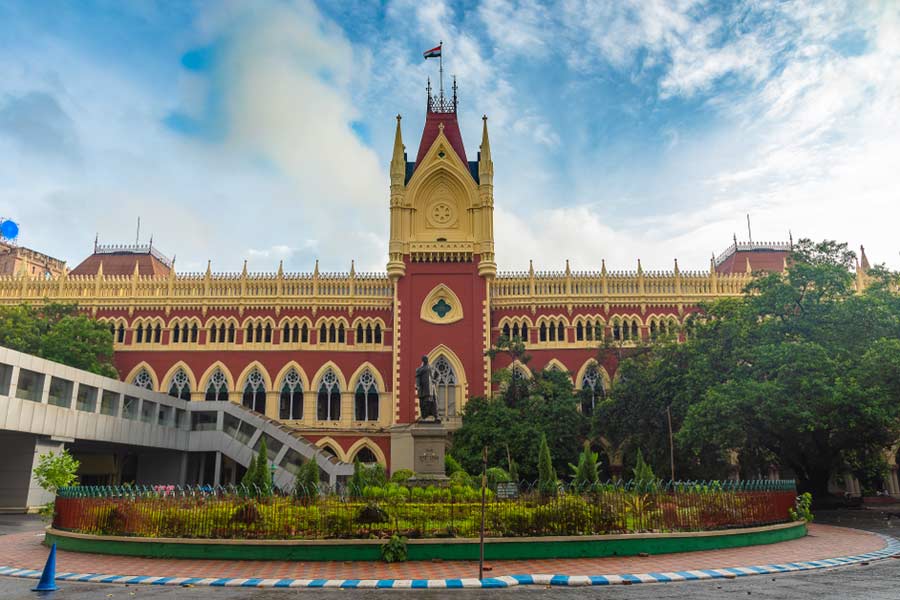
Workers carry out Golghar renovation work. Picture by Ashok Sinha
Nuts and bolts have arrived to give Golghar its might.
The Archaeological Survey of India has resumed the restoration work of the colossal granary after almost 10 months because nuts and bolts required to join the iron scaffolding have been purchased.
The Telegraph had reported about the missing nut and bolts - Bolted: Golghar restoration - in its September 11, 2014.
While it might take another three-four months to finish the restoration work, people can expect laser shows inside the heritage granary from February. Machines for the laser shows have arrived, too, and trials have also been conducted. The shows would start as soon as the ASI finishes the repair work of the floor inside Golghar.
The restoration work on the outer walls of Golghar was on hold for the past 10 months because of unavailability of required equipment. Iron scaffoldings were put around the northern side of the outer wall of Golghar in September 2014 but bolts used in joining them had fallen short.
'The required equipment for carrying out the restoration work has been procured and the work is going on at a war-footing,' said Hemsagar A. Naik, the superintending archaeologist at Patna circle of ASI.
The bolts required for the restoration work were to be bought from Calcutta but the Patna circle of ASI could not directly procure items from outside Bihar. Consequently, tenders were floated to rope in a firm that supplied the bolts.
In 2010, the state archaeological directorate, the custodian of Golghar, had asked the ASI's Patna circle to carry out restoration work on the outer and inner walls of the iconic structure. The government sanctioned Rs 98 lakh in 2011 for the work that was necessitated after the 3.6-m thick wall developed a vertical crack near the staircase. The restoration work was to be completed by the end of the 2013-14 fiscal. The last repair work was carried out around 20 years ago.
State archaeological director Atul Kumar Verma said: 'The cracks on the internal walls have already been filled. However, during the restoration work using 'pressure-grouting' method, the floor inside Golghar got damaged. Accordingly, the floor restoration work and the outer wall are being done simultaneously now. Re-plastering is being done on the outer wall by removing the original plaster and putting a fresh layer.'?
Pressure grouting is often used to fill up cracks and voids to control water seepage.
'Restoration of Golghar is an arduous job and it takes considerably more time. Thus, we expect that the remaining restoration works would be completed in another three to four months,' said Verma.
Laser shows
From February, visitors to Golghar would be able to watch laser shows inside the heritage granary. People would sit on reclining chairs to watch the graphics show drawn on its walls by laser light projection.
'The machines for conducting the laser shows were delivered to us by January 15 and we are now waiting for the floor inside Golghar to be repaired. We intend to start the laser shows by February end,' said state archaeological director Atul Kumar Verma.











